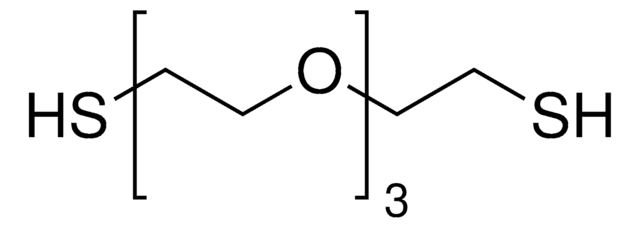55417
1,2-Propanediol
analytical reference material
Sinônimo(s):
Propylene glycol
About This Item
Produtos recomendados
grau
analytical reference material
Nível de qualidade
densidade de vapor
2.62 (vs air)
pressão de vapor
0.08 mmHg ( 20 °C)
Ensaio
≥98.5% (qNMR)
≥99.5% (GC)
temperatura de autoignição
779 °F
prazo de validade
limited shelf life, expiry date on the label
Lim. expl.
12.5 %
técnica(s)
HPLC: suitable
gas chromatography (GC): suitable
Impurezas
≤0.5% water
índice de refração
n20/D 1.432 (lit.)
n20/D 1.432-1.434
pb
187 °C (lit.)
pf
−60 °C (lit.)
densidade
1.036 g/mL at 25 °C (lit.)
aplicação(ões)
cleaning products
cosmetics
flavors and fragrances
food and beverages
forensics and toxicology
personal care
pharmaceutical (small molecule)
formato
neat
cadeia de caracteres SMILES
CC(O)CO
InChI
1S/C3H8O2/c1-3(5)2-4/h3-5H,2H2,1H3
chave InChI
DNIAPMSPPWPWGF-UHFFFAOYSA-N
Procurando produtos similares? Visita Guia de comparação de produtos
Aplicação
Código de classe de armazenamento
10 - Combustible liquids
Classe de risco de água (WGK)
WGK 3
Ponto de fulgor (°F)
217.4 °F - closed cup
Ponto de fulgor (°C)
103 °C - closed cup
Choose from one of the most recent versions:
Certificados de análise (COA)
Don't see the Right Version?
If you require a particular version, you can look up a specific certificate by the Lot or Batch number.
Já possui este produto?
Encontre a documentação dos produtos que você adquiriu recentemente na biblioteca de documentos.
Nossa equipe de cientistas tem experiência em todas as áreas de pesquisa, incluindo Life Sciences, ciência de materiais, síntese química, cromatografia, química analítica e muitas outras.
Entre em contato com a assistência técnica




